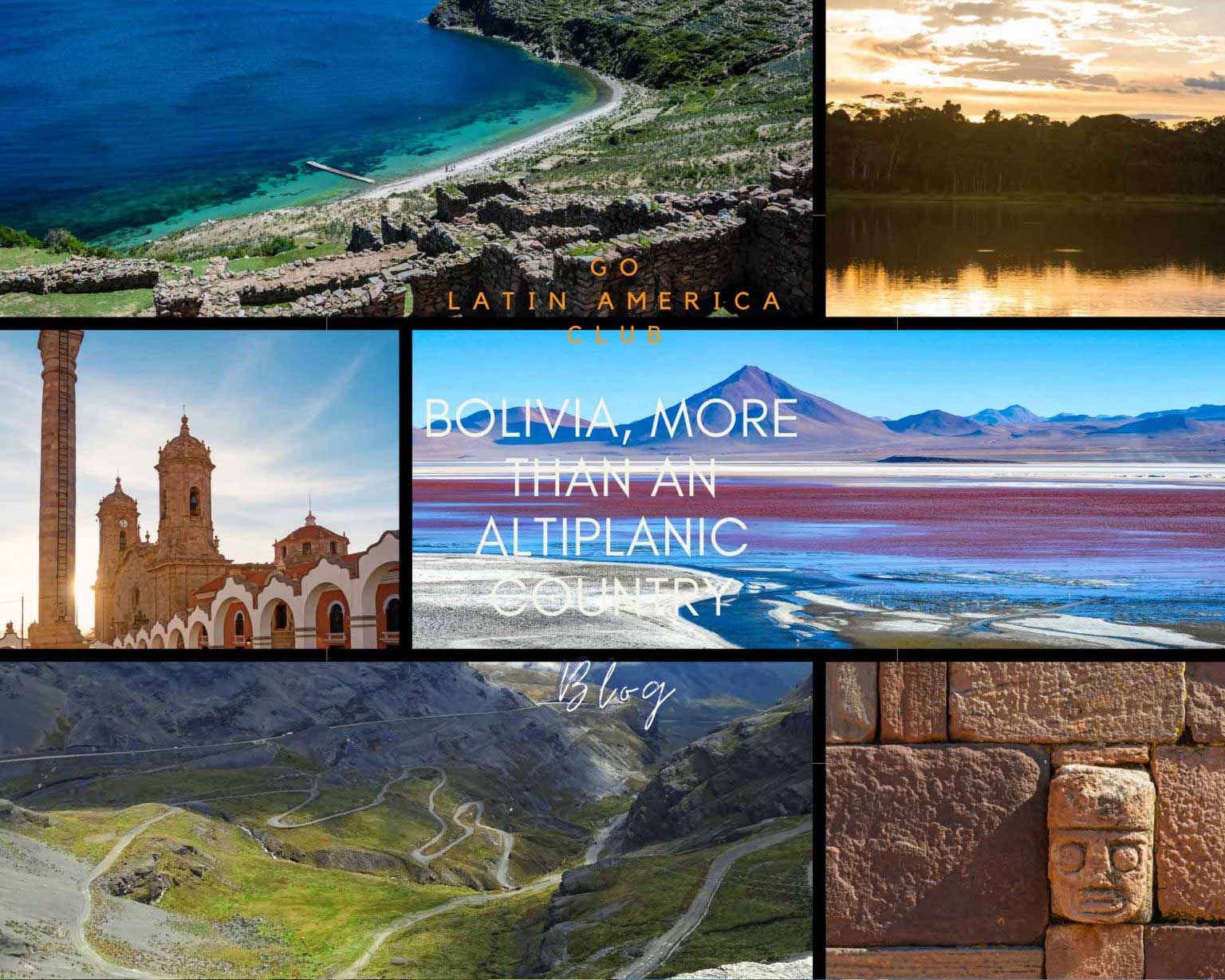Holder of very diverse and intense landscapes such as those seen in the Sol de Mañana Geysers that seem to be taken from Mars, or in its magical multicolored lagoons in the Eduardo Avaroa Andean Fauna National Reserve are some of the reasons why we should all visit Bolivia. As if that were not enough, it is here where there is a huge mirror in the middle of the world’s largest salt flat, in Uyuni, which makes it possible to reach the sky even for a few minutes due to this incredible natural effect. It is also a very important destination for its historical and cultural legacy, starting with the mythical and emblematic Lake Titicaca, where it is said that the largest empire in all of South America, the Inca, originated. But these sacred lands hold an even more ancestral legacy on the outskirts of La Paz where the impressive Tiwanaku Archaeological Complex is located, where the vestiges of this great ancient empire lie.
Undoubtedly, Bolivia is more than what is known, an altiplanic country. It is a totally authentic destination where you have to want to let yourself be completely carried away so that the unexpected can occur that as soon as you leave you are already wishing to return.
- Department of Beni
- Madidi National Park
- Department of Chuquisaca
- Sucre
- Department of La Paz
- La Paz
- Lake Titicaca
- Tiwanaku
- Coroico and the Route of Death
- Department of Potosi
- City of Potosi
- Uyuni Salt Flat
- Train Cemetery
- Eduardo Avaroa National Andean Fauna Reserve
- Department of Santa Cruz
- Jesuit Missions of Chiquitania
- Department of Tarija
- Wine route
1. DEPARTMENT OF BENI
Many are surprised to learn that the Amazon constitutes more than 40% of the national territory and it is from the city of Rurrenabaque that you reach one of the entrances to the Madidi National Park in the department of Beni.
The most megadiverse place in the country and home to one of the most important jungle regions of the planet with abundant flora and fauna and is sure to be an interesting visit in the itinerary through Bolivia.
2. DEPARTMENT OF CHUQUISACA
The silver city of Sucre was named a World Cultural Heritage Site by UNESCO for its rich colonial architecture because it was home to the Spanish bourgeoisie during the mining boom of its neighboring city of Potosi. It was the first capital of Bolivia and is currently the historical and constitutional capital of the country.
3. DEPARTMENT OF LA PAZ
The largest lake in South America and the highest navigable lake in the world is located in the Andes of Peru and Bolivia. From the Bolivian side you can visit Copacabana, a town on the shores of Lake Titicaca. Many of the itineraries that end in Puno-Peru enter Bolivia from here. From its port you take a boat or catamaran to Isla del Sol and Isla de la Luna, main attractions in this part of Lake Titicaca.
Most people choose to visit only the Isla del Sol, a small island of only 14 square kilometers but it is the best place to observe the immensity of the lake and enjoy the cobalt blue that enchants everyone who visits it. If time permits, we recommend spending one night in one of its lodges, as it is truly magical to watch the sunset in a quiet place surrounded by so much natural beauty.
TIWANAKU
It is an archaeological center and perhaps one of the most important of all Bolivia as it keeps in its complex the ancestral legacy of the Tiwanaku Empire and is almost an obligatory stop on any itinerary especially for travelers who have a cultural and historical interest. In this site is a collection of monolithic gates and subway temple complexes that tell the secrets of a virtually unknown civilization.
Adjacent to this is Puma Punku, a large temple complex that is fascinating to many for having stonework cut with such precision, delicate technique without the use of a mortar. It is until today a mystery because there is no logical reason.
CITY OF LA PAZ
In this part of the world you breathe a different air and we mean it literally at more than 4,000 meters above sea level is the highest capital of the world in La Paz. It is actually the administrative capital of Bolivia and is a city that through the centuries has been expanding reaching the Cordillera Real and this is what makes La Paz unique with an evident colonial architecture in its historic center legacy of the Spanish together with new eclectic buildings in El Alto making a total contrast with the Andes in the background. To better observe this it is recommended to take a ride on its cable car that covers most of the city at 4,100 meters above sea level.
The center still retains the colonial beauty of yesteryear in the Plaza Murillo, Calle Jaén, Calle de las brujas and nearby is the Church of San Francisco, the most important of La Paz.
COROICO AND THE ROUTE OF DEATH
Between the Andes and the Amazon in the middle of the jungle in Coroico there is what many have called the Road of Death for being a challenging and narrow road of 80 kilometers full of curves and stones. It is the ideal place for those looking to feel a lot of adrenaline riding a bicycle or motorcycle.
4. DEPARTMENT OF POTOSÍ
The Salar de Uyuni is the most desired destination for travelers when visiting Bolivia as very few destinations compare. The busiest time is the rainy season from December to March for its famous mirror effect, that is when we can have the sky at our feet. However, during the dry season in mid-October it is excellent for taking pictures with deceptive but fun perspectives when you can also see a clearer sky ideal for stargazing.
TRAIN CEMETERY, UYUNI
Near the salt flat another attraction is the train cemetery or locomotive cemetery. It is one of the favorite places for tourists to take pictures.



















